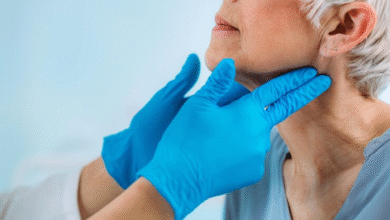What Are the Most Effective Peyronie’s Disease Treatment Options Today

Peyronie’s disease is a condition that affects men, causing the penis to curve due to scar tissue, also known as plaques, forming under the skin. This can lead to pain, bending during erections, and in severe cases, difficulty during sexual activity. While it can be distressing, advancements in Peyronie’s disease treatment in London and globally have provided patients with several effective options to manage and correct the condition. Understanding these Peyronie’s disease treatment options can help men make informed decisions about their care.
Understanding Peyronie’s Disease
Peyronie’s disease typically develops when small injuries occur to the penis, often during sexual activity, sports, or accidents. While most men heal naturally, others form fibrous scar tissue that causes the penis to bend or curve. The condition can appear suddenly or develop gradually, often progressing through two phases: the acute phase, where the plaque forms and pain occurs, and the chronic phase, where the curvature stabilises but may persist without pain.
The condition can affect men of any age but is more common in those over 40. Genetics, connective tissue disorders, and certain health conditions, such as diabetes or high blood pressure, may increase the risk.
Non-Surgical Treatment Options
For men in the early or mild stages, several non-surgical approaches can help reduce symptoms and improve curvature. These treatments focus on reducing plaque buildup and improving penile function.
Oral Medications
Although oral medications are not always the most effective for Peyronie’s disease, some doctors prescribe drugs to slow down plaque formation or reduce pain. Commonly used medications include Vitamin E, Potassium Para-Aminobenzoate (Potaba), and Pentoxifylline. These may help in mild cases but are less effective once the plaque has hardened.
Injections
Injections directly into the plaque have become one of the most promising Peyronie’s disease treatment options today. Collagenase Clostridium Histolyticum (Xiaflex) is the only FDA-approved injectable for Peyronie’s disease. It works by breaking down the collagen within the scar tissue, allowing the penis to straighten gradually when combined with manual stretching exercises.
Other injections, such as Verapamil or Interferon, may also be used to disrupt scar tissue development and reduce curvature.
Shockwave Therapy
Low-intensity shockwave therapy is a non-invasive option used in some clinics offering Peyronie’s disease treatment in London. It uses sound waves to break down scar tissue, improve blood flow, and alleviate pain. While more research is needed to confirm its long-term benefits, it shows potential for men in the early stages of the condition.
Traction and Vacuum Devices
Penile traction devices (stretchers) and vacuum erection devices can also be beneficial. Traction therapy gently stretches the penis over time, which can help reduce curvature and restore length lost due to the disease. These devices are often recommended alongside medical treatments or after injections for enhanced results.
Minimally Invasive Procedures
When non-surgical treatments do not provide sufficient improvement, minimally invasive approaches may be considered. These procedures aim to correct curvature without the need for extensive surgery.
Needle Aspiration or Plaque Softening
In select cases, doctors may use needle aspiration to soften or remove small plaques. This is often combined with medication injections to enhance tissue healing. Although results vary, it offers an alternative for men who are not ready for surgery.
Platelet-Rich Plasma (PRP) Therapy
Some clinics have explored PRP therapy, which involves using a patient’s own blood to extract growth factors that are then injected into the affected area. The idea is to encourage tissue healing and improve elasticity. While research is still ongoing, PRP may become a complementary option in future Peyronie’s disease treatment options.
Surgical Treatment Options
Surgery is typically recommended for men with severe curvature or those who experience functional difficulties despite other treatments. It is usually considered after the disease has stabilised for at least 6 to 12 months and the pain has subsided.
Plication Surgery
This procedure involves shortening the longer side of the penis to straighten it. It is suitable for men with less severe curvature and good erectile function. Plication is a relatively simple surgery with minimal risk, though it may slightly reduce penile length.
Plaque Incision or Excision with Grafting
For more significant curvatures, plaque incision (cutting the scar tissue) or excision (removing it) may be performed. A graft made from the patient’s tissue or a synthetic material is placed to restore shape and length. This method can correct more severe deformities but carries a higher risk of erectile weakness afterward.
Penile Implants
In cases where Peyronie’s disease coexists with erectile dysfunction, a penile implant can be an excellent solution. The implant straightens the penis and allows for firm erections. Modern implants are discreet, reliable, and can significantly improve quality of life for affected men.
Psychological Support and Lifestyle Changes
Living with Peyronie’s disease can affect self-esteem, relationships, and overall well-being. Counselling or sex therapy can help men and their partners cope with the emotional effects of the condition. Maintaining a healthy lifestyle, avoiding tobacco and excessive alcohol, and managing underlying conditions such as diabetes can also improve treatment outcomes.
Choosing the Right Peyronie’s Disease Treatment in London
Choosing the right Peyronie’s disease treatment in London depends on several factors, including the severity of the curve, erectile function, and personal preferences. Men are encouraged to consult a urologist experienced in managing Peyronie’s disease to discuss all available options. Combining therapies — such as injections with traction or surgery with post-operative rehabilitation — can often provide the best results.
Final Thoughts
Peyronie’s disease can be a challenging condition, but today’s medical advances provide men with effective treatment options to restore both function and confidence. From non-surgical therapies to advanced surgical techniques, Peyronie’s disease treatment options continue to evolve, helping men regain control over their sexual health and overall well-being. Seeking early consultation with a qualified specialist can make a significant difference in achieving a positive outcome.





